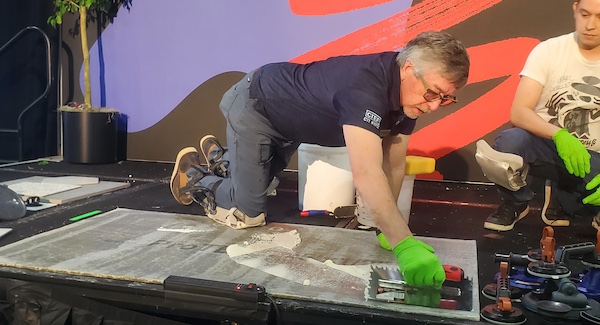Every tile job, be it large or small, carries with it safety risks to the installer. And while there’s plenty to be thinking about prior to setting foot on site, safety is something NTCA Trainers say needs to be a priority.
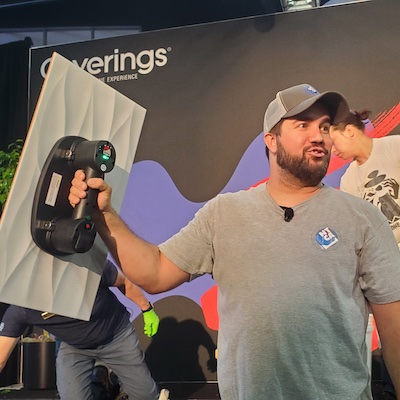
“Every single installer I’ve ever met has a story about some kind of injury on the job,” said NTCA Trainer Matt Welner. “Unfortunately, as an installer, I too, have my own dreaded tales.”
As the NTCA Trainers travel the country, safety is always woven into the workshops, no matter what the main topic of the event. It’s also why Welner and NTCA Training Director Mark Heinlein focused their Coverings 2024 presentations on the Innovation Installation Stage on keeping installers safe on the job.
From new ergonomic tools that support and distribute body weight while kneeling, to thinking about the closest emergency room to your jobsite in the event of an accident, the trainers presented seven sessions with meaningful takeaways throughout the conference.
RELATED: Coverings 2024 propels industry growth and inspires next generation professionals


“We focus our safety discussions on common sense and awareness,” said Welner. “With that said, tool, equipment and setting material manufacturers are also recognizing ways to help us stay safe on the jobsite. At Coverings, we saw some really cool new products to assist with lifting, dust extraction systems and knee pads designed to help installers be both productive and safe.”
NTCA member Brandon George from A Sharper Finish in Lexington, N.C., attended the show to check out some of the new equipment and ended up showing installers that accidents can happen to anyone. The trainers spotted him in the audience with a sling on his arm. Being a good sport, he explained that he tore his bicep while lifting. Unfortunately, he also lost weeks of work as a result. George’s experience made the point that observing safety practices is good business, too.
Potential jobsite hazards
The potential hazards on tile jobs fall into specific categories, and the NTCA Trainers offer these tips to stay safe:
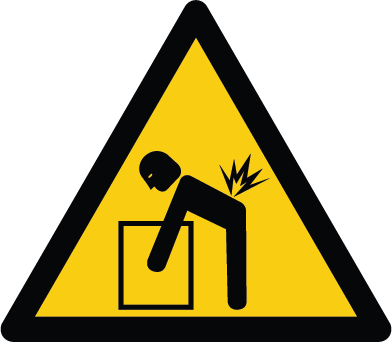

Musculoskeletal injuries/ergonomic hazards: Tile installers often have to work in awkward positions, kneeling and bending over for extended periods. This can lead to strains, sprains, and chronic pain in the back, knees, shoulders, and other joints. Lifting and carrying heavy tile materials can lead to overexertion injuries, particularly if proper lifting techniques are not employed.
NTCA Trainer Tip: Stretch before gearing up, wear back, knee, ankle and wrist supports as needed, consider a compression garment or sleeve, and get – and use – good knee pads.
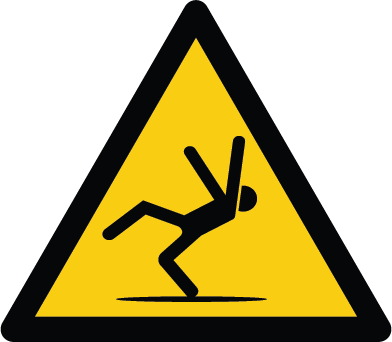

Trips, slips, and falls: Tile installation work can be messy, in tight surroundings, and on uneven surfaces, which can result in serious injuries such as fractures, head injuries, and sprains.
NTCA Trainer Tip: Keep a clean jobsite, wear PPE appropriately, and use yellow tape/cones or barriers to keep others off freshly-set tile.


Exposure to hazardous or irritating materials: Some tile adhesives, grouts, and sealants may contain chemical solvents or epoxy resins that can cause skin irritation. Cutting, grinding, or breaking tiles can generate respirable crystalline silica dust that can cause silicosis, a serious lung disease.
NTCA Trainer Tip: Read safety data sheets to know what products you are working with, their potential hazards and understand how you can mitigate risk, such as wearing latex, nitrile or vinyl gloves. Use a wet saw to prevent airborne particles when cutting tile or use engineered control devices to collect airborne dust as required by OSHA’s Respirable Crystalline Silica regulation.


Cuts and lacerations: Working with sharp tools, such as razor blades, tile saws, grinders and nippers, increases the risk of cuts and lacerations.
NTCA Trainer Tip: Wear cut-resistant gloves, safety glasses, and hearing protection. Set up tools properly and use the appropriate tools for the appropriate job.


Electrical hazards: Using power tools or working near electrical sources can pose a risk of electrocution if safety measures are not followed.
NTCA Trainer Tip: Keep cords elevated out of standing water and don’t stand in puddles of water using an electric tool. Shut off appropriate breakers when tiling a backsplash, and do a routine inspection of tools and drop cords before work begins.
If you work on commercial projects, you’re very much aware of the pre-construction hazard assessments, the safety manual requirements, toolbox talks, and compliance checks that occur daily and weekly. Yet one size does not fit all. What many installers find most helpful – and reassuring – according to the NTCA Trainers, is the overall commitment to safety and the need for open communication, no matter what the size of your crew or team.
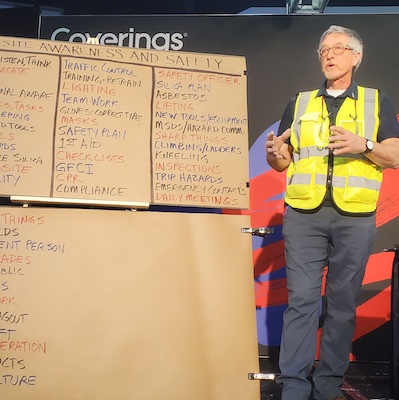

While each job in each state has its unique safety requirements, the common goal is to protect installers, finishers and helpers and to create a culture of safety on jobsites. It’s an ongoing effort that includes team awareness, general and specific training on prevention and response, and individual compliance.
“Job site safety in the tile industry is not one person’s job or something we talk about just at the start of a job, it’s a daily commitment, a way of doing business,” explained Welner. “It takes an ongoing commitment from each team member working together to create a culture focused on safety so that we all can make it home to our family safely, without injury.”
Creating safety awareness and putting a safety program in place has added benefits. Keeping installers on the job ensures a steady income and that project timelines are met, making clients and GCs more apt to hire you again. Plus, your insurance carriers may offer discounts on your workers compensation policy.
There are a number of resources to support tile installer safety programs. Some are listed below. NTCA Trainers want installers to know that they are always welcome to attend a workshop and ask questions – it’s a great place to prepare for all aspects of an installation. To see a schedule of upcoming workshops and training events, visit www.NTCATraining.com.
Resources:
• NTCA University – The first two years include a number of safety lessons on PPE, tools, jobsites and more.
• OSHA – Recommended practices for safety and health programs.
https://www.osha.gov/safety-management/step-by-step-guide
º Note: Recommended Practices for Safety and Health Programs in Construction
https://www.osha.gov/sites/default/files/publications/OSHA3886.pdf
º OSHA Information on Respirable Crystalline Silica in Construction
https://www.osha.gov/silica-crystalline/construction
• NTCA Reference Manual – Dis-cusses various precautions on specific topics
• Check training dates at: www.tile-assn.com Under Training and Education go to “Event Calendar” or visit www.NTCATraining.com.


Chris Woelfel
NTCA Technical Committee, J.G. Woelfel & Associates, LLC


